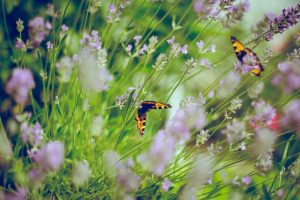Japanese Maples are an elegant and classic addition to any landscape. With many styles and varieties to choose from, there’s (nearly) something for everyone’s tastes!
What are the ideal conditions for a Japanese Maple?
Sun Tolerance of Japanese Maples
You’ll sometimes read online that Japanese Maples need full sun, but full sun in Utah, because of our high elevation and higher UV exposure is too intense for them. Due to their delicate leaves, most Japanese Maples require some shade and a break from the sun, especially in Utah. Too much sun and you’ll start to see leaves on your tree burn and turn crispy. Often, the best location for a Japanese Maple is somewhere that gets sun in the morning and shade or filtered light in the afternoon and evening.
Soil Requirements for Japanese Maples
Japanese Maples like well-draining soils with low pH, acidic soils. Much of the Salt Lake Valley has clay soil, which tends to be dense and alkaline, or high pH. To accommodate Japanese Maples, we recommend using organic materials like compost or soil conditioners to help loosen soils around your tree and add nutrients back into the soil. To add even more nutrients to help your tree grow, regular fertilizing is recommended.
Japanese Maple Hardiness
Most Japanese Maples are cold hardy to Zone 5 (to -20 degrees F) and may suffer in some of Utah’s more high elevation or windy areas. There are some Maples, such as Korean or Hybrid Korean Maples, which are hardy to Zone 4 (to -30 degrees F).
Japanese Maple Alternatives for Full Sun
Tiger Eyes Cutleaf Staghorn Sumac
Rhus typhina ‘Bailtiger’
Height: 6’ | Spread: 6’
For a small, ornamental tree with vibrant color, Tiger Eye Sumac is a clear standout. Delicate cutleaf foliage emerges bright green in the Spring on spreading, upright branches, turning chartreuse for the summer before transforming into a dramatic display of red and orange hues in the Fall. Tiger Eyes can handle hot, sunny locations, as well as partial sun, making it a perfect alternative to the more delicate laceleaf Maples. And, it’s a fast grower, too, compared to the slower growing Japanese Maples.
Black Lace Elderberry
Sambucus nigra
Height: 6’-10’ | Spread: 6’-10’
If you’re looking for a delicate laceleaf look that can stand up to heat and sun, Black Lace Elderberry is the plant for you. Black, deeply dissected foliage densely covers tall, upright stems. Though Elderberries grow naturally bushy with a multi-stem habit, you can also prune them to have a more tree-like look. Plus, they produce large and showy pink flower clusters in the late Spring (that give way to berries if a pollinator is present).
Smoke Bush
Cotinus spp.
Sizes varies by variety
Smoke Bush, also called Smoke Tree, is a large shrub or small tree with red or gold leaves that features plumes of flowers that look like fluffy clouds or smoke. There are some varieties of Smoke Bush such as ‘Winecraft Black’ or ‘Lilla’ that are dwarf-sized, while others such as ‘Royal Purple’ can grow to be small trees (up to about 15’ tall).

